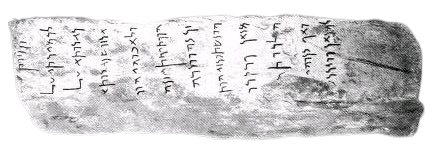In the Gospel of John the Aramaic terms Βηθεσδά, Γαββαθᾶ, Γολγοθᾶ, Ῥαββουνί are called “Hebrew.”Aramaic, too, must be meant by the “Hebrew tounge” in which Paul spoke to the people of Jerusalem (Acts 21:40, 22:2), and in which Jesus spoke to Paul (Acts 26:14).
According to Acts 6:1, Ἑλληνισταί and Ἑβραῖοι were the names of the two parts of the Jewish people as divided by language, although Συρισταί would have been the more precise counterpart of Ἑλληνισταί. But if it was possible to characterize Aramaic as “Hebrew,” it is clear that Aramaic was the everyday speech of the Jewish people at this period, in so far, at least, as it was not Greek.
Josephus, indeed showed himself (Ant. X.i.2, XII. ii. 1) quite capable of distinguishing the language and written character of the “Syrians” from those of the “Hebrews.” And yet between Hebrew and Aramaic words he makes no difference. According to Anti. I. i. 1, 2, σάββατα and Ἀδάμ belong to the Hebrew tounge, but ἀσαρθά as well (Ant. III. x. 6) is a term of the “Hebrews.” The “Hebrew” in which Josephus addresses the people of Jerusalem (Bell. Jud. VI. ii. 1) is even called by him (Bell. Jud. V. ix. 2) ἡ πάτριος γλώσσα, though in the circumstances nothing but Aramaic can be looked for.
That Aramaic had at least a distinct predominance in Judaea may be inferred with certainty from the place-names in Jerusalem and its environs:
- Ἀκελδαμάχ (חֲקֵל דּמא);
- Βηθζαθά, Βηζεθά (בֵּית זַיְתָא);
- Γαββαθᾶ (גַּבַּחְתָּא);
- Γολγοθᾶ (גָּלְגָּלְתָּא);
- Ὄπλα, Ὀφλᾶς (עָפְלָא);
- Σαφείν (צָפִין);
- Χαφεναθά (כָּפְלָתָא)
Note: Adapted from English translation of Gustaf Dalman’s The Words of Jesus (pages 6-7).
